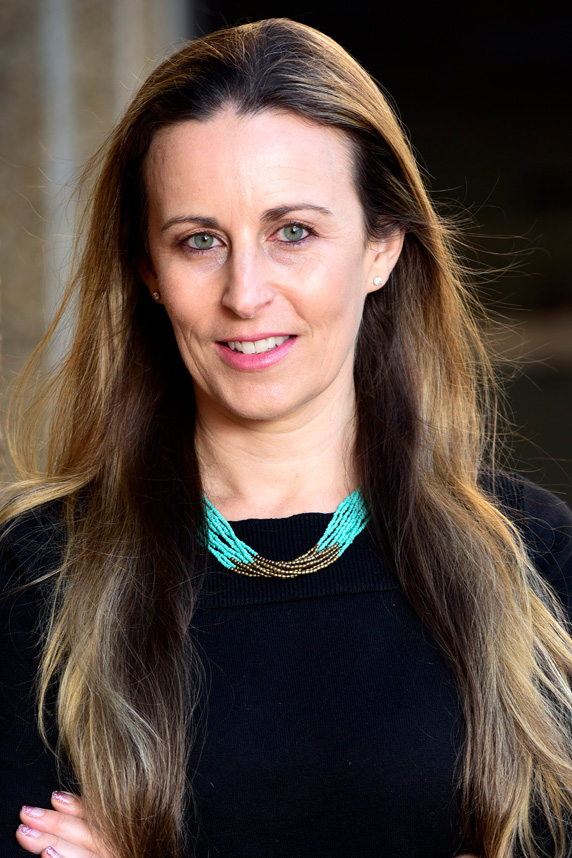U.S. government agency efforts to reduce and replace animal use for chemical safety testing are highlighted in the 2018-2019 Biennial Progress Report(https://ntp.niehs.nih.gov/iccvamreport/2019/) of the Interagency Coordinating Committee on the Validation of Alternative Methods (ICCVAM).
The National Toxicology Program Interagency Center for the Evaluation of Alternative Toxicological Methods(https://ntp.niehs.nih.gov/pubhealth/evalatm/) (NICEATM) compiled the report, which was published in July. Environmental Factor spoke with Nicole Kleinstreuer, Ph.D., the center’s acting director, who discussed some of the important accomplishments detailed in the publication.
 Kleinstreuer became acting director of NICEATM in January 2020, after serving as deputy director since 2016. (Photo courtesy of Steve McCaw)
Kleinstreuer became acting director of NICEATM in January 2020, after serving as deputy director since 2016. (Photo courtesy of Steve McCaw)EF: What is ICCVAM’s greatest success in the last two years?
Kleinstreuer: Publication of the Strategic Roadmap for Establishing New Approaches to Evaluate the Safety of Chemicals and Medical Products in the United States(https://ntp.niehs.nih.gov/go/natl-strategy) in early 2018 was a major achievement. It represents a consensus of the 16 ICCVAM agencies on advancing new methods for safety testing.
Also, agencies are developing their own plans for reducing animal use. For example, FDA [U.S. Food and Drug Administration] published their Predictive Toxicology Roadmap, which gives annual updates on how they are promoting alternatives to animal testing.
EF: How are these efforts reducing animal testing?
Kleinstreuer: The strategic roadmap has driven a tremendous amount of progress, particularly in regard to commonly required tests for skin sensitization, skin and eye irritation, and acute systemic toxicity, such as poisoning after ingestion.
ICCVAM workgroups were formed around each of those areas, with participants recognizing that they first needed to understand the areas in the context of regulatory decision-making. The workgroups produced scoping documents that provided such context. Individuals then applied what they learned to identify and develop tests tailored to meet regulatory needs, and they established scientific confidence in those tests.
Skin sensitization is a great example. The first step involved understanding what information agencies need to identify chemicals that might cause allergic skin reactions. After that, an international effort identified nonanimal tests that could provide that information. These tests are now accepted by EPA [U.S. Environmental Protection Agency] and are also used by NTP(https://ntp.niehs.nih.gov/whatwestudy/testpgm/immtox/) [National Toxicology Program].
EF: What is NICEATM’s role in these activities?
Kleinstreuer: ICCVAM is an interagency committee of voluntary representatives. It does not have a budget, staff, or laboratory. To accomplish its work, the committee directs NICEATM, which engages in scientific and administrative activities to advance agency priorities. Such activities include supporting workgroups, coordinating validation studies to demonstrate the usefulness of new methods, data analysis, and computational modeling.
EF: What else has ICCVAM accomplished?
Kleinstreuer: During the last two years, ICCVAM has focused strongly on increasing availability of high-quality data. That has been a major topic of discussion at ICCVAM’s recent advisory committee meetings(https://ntp.niehs.nih.gov/events/sacatm/). Good data from both animal and non-animal methods are really important for evaluating new approaches.
NICEATM supports that goal through our Integrated Chemical Environment(https://ice.ntp.niehs.nih.gov/) (ICE), which allows ICCVAM stakeholders to use computational tools and models we developed. For example, ICE can help users predict chemical exposure levels that would produce blood concentrations equivalent to concentrations shown to cause toxicity in nonanimal tests.
EF: Going forward, what are you excited about? What are the challenges?
Kleinstreuer: I am particularly excited about the commitment I see from ICCVAM agencies to implement alternatives. In addition to FDA, EPA and the Department of Defense have developed strategic plans to guide advancement of nonanimal testing approaches. ICCVAM and NICEATM will play a huge part in implementing their goals.
There are still many challenges in this area. One important element will be the ability to shift from reliance on animal models as the gold standard for evaluating new approaches. We need to focus instead on understanding human biology and toxicity mechanisms as the basis for establishing scientific confidence in alternative methods.
(Catherine Sprankle is a communications specialist for ILS, the contractor supporting NICEATM.)









